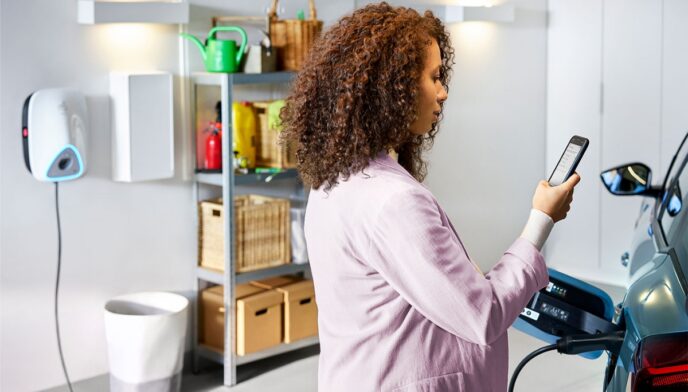
Schneider Electric has detailed its EVlink Home EV charger.
The charger incorporates new features aimed at making at-home charging easier to install and more cost effective to use.
The new design, which is available for homeowners to purchase now, includes anti-tripping functionality through its optional peak controller. The feature means homeowners can run multiple devices on the home power system, such as dishwashers, air conditioning, and pool pumps, while charging the car at the same time, all without fear of a power supply failure.
The launch of the charger – the latest addition to Schneider Electric’s EVlink range – comes as the EV market has seen a 65% increase in 2022 sales compared to 2021.
As more Australian homeowners switch to EVs in an effort to reduce their carbon emissions, demand will continue to grow for state-of-the-art, affordable devices that can be used from home, the company says.
“Electric vehicles can have a profound impact on users’ carbon emissions, so it’s tremendously encouraging to see how many Australians are opting for electric,” says Clipsal by Schneider Electric home and distribution vice president Chris Kerr.
“We’re confident this market will continue to grow, but as more Australians go electric it’s important that they have access to cost-effective and sustainable charging solutions.
“As such, electricians are becoming the trusted professionals guiding them and making sure they have the most efficient and safe installation.”
Market growth and increased demand also present a significant opportunity for electricians to expand their services and build their businesses, Kerr explains.
The EVlink Home can be added to services electricians offer their customers.
“The EVlink Home has been built with an easy-install process, safety systems, and cost-effective charging solution, which means that electricians will be able to support even more homeowners, giving Aussies greater access to sustainable solutions,” says Kerr.
Importantly, the charger also features integrated RDC-DD protection, meaning it requires only a Type A circuit protection in the distribution board, a safer and more affordable alternative to Type B protection.
Click here for more information.








